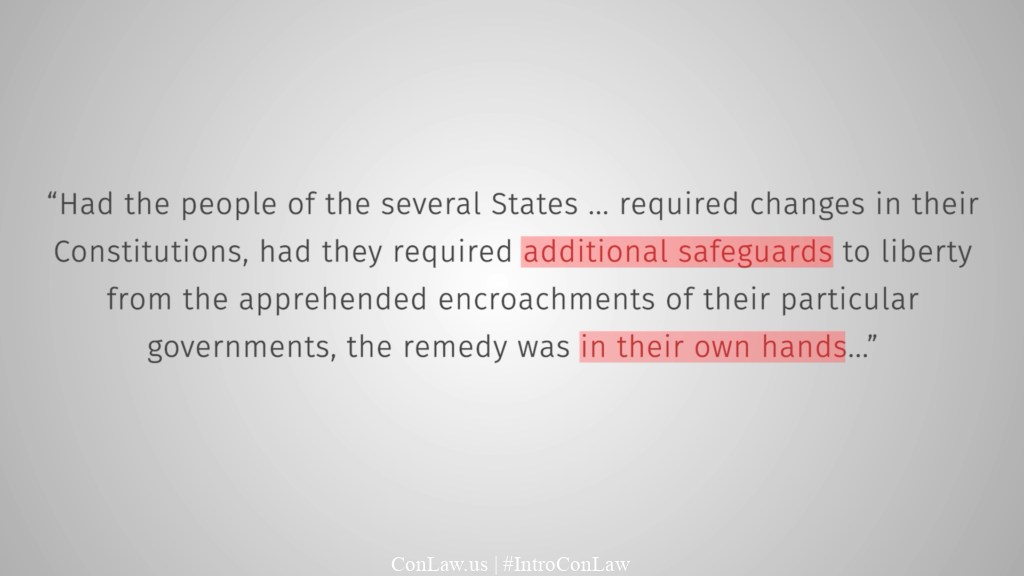



The proposed federal Constitution was submitted to the states in 1787. Many states ratified the Constitution on the condition that certain amendments would be added later. In 1789, the first Congress introduced twelve proposed amendments, ten of which were ratified. Today, these ten amendments are known collectively as the “Bill of Rights.”
The First Amendment begins, “Congress shall make no law respecting an establishment of religion.” There is no question that this provision limits Congress’s powers. But what about the Fifth Amendment’s Takings Clause? It provides “nor shall private property be taken for public use, without paying just compensation.” The Clause does not specify whether the state governments are also prohibited from taking private property without just compensation. Barron v. City of Baltimore (1833) would resolve this question.